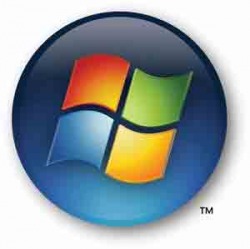
Microsoft is apparently circulating invitations to a mysterious event in San Francisco next week. Engadget has an image of the invite itself, which came in a tube-like contraption and features the vaguely ominous tagline, "It's Time to Share."
Paul Thurrott, over at Windows Phone Secrets, predicts, "This is the Pink phone announcement. I have not been invited to this specifically, but they are gearing up to launch this new side business, basically a texting/social networking phone platform for teenagers ('Pink'). It is not Courier."
For those of you tuning in midway through the program, Project Pink is the Loch Ness Monster of vaporware: a long-rumored branded-smartphone project, sighted occasionally in leaked documents but never officially confirmed by Microsoft. In September 2009, the rumors focused on the possibility of two smartphones, code-named Turtle and Pure, which were being developed in conjunction with Danger, a company that Microsoft acquired in 2009 and integrated into its PMX (Premium Mobile Experiences) team, a division of its MCB (Mobile Communications Business).
If the April 12 announcement in San Francisco does turn out to be Pink-related, it would follow the groundswell of scuttlebutt from early March, including a Reuters report that stated Verizon and Microsoft would team up to launch a pair of smartphones in either late spring or early summer that were geared toward social networking. At the same time, Gizmodo posted images of what it said was the Pure phone.
In a possible Pink phone's favor is the fact that, in October 2009, a hardware issue on servers being run by Danger resulted in the personal data being wiped from nearly 800,000 Sidekick users' phones. Following that, T-Mobile temporarily pulled the Sidekick, even as Microsoft engineers scrambled to restore user data. I remember at the time that T-Mobile's message boards filled with irate customers threatening to jump ship; if Project Pink rolls out, appealing to the same demographic as the Sidekick, then it could claim a percentage of that market.
In any case, the fact that these phones are being apparently targeted to teenagers makes it a sideshow, in many ways, to the larger Microsoft initiative of Windows Phone 7, due for release on a variety of devices later in 2010. Note that I wrote "Windows Phone 7": Microsoft has decided to drop the "Series" from the upcoming smartphone OS' name and thus make it less clunky. Which may or may not help its fortunes, but it certainly is making my fingers marginally less exhausted.
Source : Microsoft Watch
Paul Thurrott, over at Windows Phone Secrets, predicts, "This is the Pink phone announcement. I have not been invited to this specifically, but they are gearing up to launch this new side business, basically a texting/social networking phone platform for teenagers ('Pink'). It is not Courier."
For those of you tuning in midway through the program, Project Pink is the Loch Ness Monster of vaporware: a long-rumored branded-smartphone project, sighted occasionally in leaked documents but never officially confirmed by Microsoft. In September 2009, the rumors focused on the possibility of two smartphones, code-named Turtle and Pure, which were being developed in conjunction with Danger, a company that Microsoft acquired in 2009 and integrated into its PMX (Premium Mobile Experiences) team, a division of its MCB (Mobile Communications Business).
If the April 12 announcement in San Francisco does turn out to be Pink-related, it would follow the groundswell of scuttlebutt from early March, including a Reuters report that stated Verizon and Microsoft would team up to launch a pair of smartphones in either late spring or early summer that were geared toward social networking. At the same time, Gizmodo posted images of what it said was the Pure phone.
In a possible Pink phone's favor is the fact that, in October 2009, a hardware issue on servers being run by Danger resulted in the personal data being wiped from nearly 800,000 Sidekick users' phones. Following that, T-Mobile temporarily pulled the Sidekick, even as Microsoft engineers scrambled to restore user data. I remember at the time that T-Mobile's message boards filled with irate customers threatening to jump ship; if Project Pink rolls out, appealing to the same demographic as the Sidekick, then it could claim a percentage of that market.
In any case, the fact that these phones are being apparently targeted to teenagers makes it a sideshow, in many ways, to the larger Microsoft initiative of Windows Phone 7, due for release on a variety of devices later in 2010. Note that I wrote "Windows Phone 7": Microsoft has decided to drop the "Series" from the upcoming smartphone OS' name and thus make it less clunky. Which may or may not help its fortunes, but it certainly is making my fingers marginally less exhausted.
Source : Microsoft Watch

 RSS Feed
RSS Feed